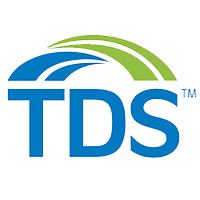SAFE CONNECTIONS NOTICE
The following explains Safe Connections and how to separate wireless lines in a shared plan under the Safe Connections rules.
What is Safe Connections?
Congress passed the Safe Connections Act of 2022 (“SCA”) with the goal of improving survivors of domestic abuse and related crimes access to communications services.
The SCA and resulting FCC rules simplify survivors’ ability to safely separate their wireless phone service from a plan shared with an alleged abuser. The SCA also allows access to the FCC’s Lifeline program.
TDS is proud to support the SCA. See below for details on how to submit a line separation request through TDS.
The Rules
The Federal Communications Commission (FCC) established rules based on the SCA, which govern how Covered Providers—including TDS Broadband Service LLC, TDS Metrocom, LLC, and TDS Long Distance Corporation (collectively “TDS”)—and survivors separate a phone line from a shared plan or separate an alleged abuser from the shared plan.
TDS values its ability to work with survivors and complies with the FCC rules, so Survivors can:
- Independently initiate separation of their wireless services from shared accounts, and
- Receive information about the Lifeline program, for which a Survivor may be eligible for six months with a valid line separation. Lifeline is not available on TDS Mobile Service. Lifeline is available on other qualifying services like home phone or broadband service. If the Survivor qualifies for Lifeline and would like it applied to mobile service, TDS will work with the Survivor to port their number to a different provider. Visit the Lifeline Support and Safe Connections Act pages for more information and to enroll.
Key Definitions
Following are key terms to better understand the Safe Connections Act, the information on this site, and assist in separating a shared plan:
1. Abuser: an individual who has committed or allegedly committed a covered act as defined in 47 U.S.C 345 and the FCC’s rule against:
- An individual who seeks relief under 47 U.S.C. 345 and the FCC’s rules; or
- An individual in the care of an individual who seeks relief under 47 U.S.C. 345.
2. Covered Act: Crimes such as domestic violence, dating violence, stalking, sexual assault, sex trafficking, child abuse, elder abuse, and similar crimes. A conviction is not necessary to qualify as a Covered Act.
3. Designated Representative: A person authorized to submit a Line Separation Request on behalf of a Survivor.
4. Line Separation Request (Request): The process by which Survivors can request to separate their lines from accounts shared with their abuser.
5. Survivor: An individual aged 18 or older who has experienced a Covered Act or is responsible for someone who has. This includes:
- Individuals in the same household (even if they reside in different residences).
- Parents or guardians of minors.
- Caretakers recognized by a valid court order or power of attorney.
- Those financially dependent on a parent, guardian, or caretaker.
Expectations after Submitting a Line Separation Request
1. Upon receiving your request form and documentation, TDS will process the request within two business days.
Note: The following issues may cause delays in processing the Line Separation Request:
- Missing or incomplete information
- Missing required documents
- Additional information was not provided in a timely fashion
- The account is subject to a fraud review
- You initiated a request to move your number to a different provider and the move request cannot be stopped
2. A TDS associate will then contact you via your preferred method (email or phone).
3. The TDS associate will ask you to authenticate your request, verifying your identity and that you are the user of the wireless line.
4. Once verification is complete, the TDS associate will confirm your desired service plan and begin the line separation process.
Once TDS completes the review, you will receive confirmation using your preferred contact method. If TDS learns there is missing or inaccurate information or technical issues, we will contact you advising of next steps.
Important Details
The following information provides useful additional information relating to domestic abuse and the line separation process.
1. Support Resources
- If you are experiencing abuse and need assistance, contact the National Domestic Violence Hotline:
Call: 1-800-799-7233
Text: BEGIN to 88788
Visit: thehotline.org
- Locate a domestic violence shelter near you for information on shelter options as well as assistance like support groups, crisis counseling, and safety planning.
2. Service Options: Establishing a new TDS Mobile Service account requires setting up a credit card online for prepaid services. You will receive an email notification with instructions on how to complete this process.
3. Mobile Plan Pricing: Line separation includes the discounted price options listed below. Each assumes you have TDS High Speed Internet service installed at your primary residence. If not, the non-discounted price is applied.
| Plan name | Voice | Text | Data | Discounted Price (per line) | Non-Discounted Price | Lines Supported |
|---|---|---|---|---|---|---|
| Unlimited | Unlimited | Unlimited | 30 GB | $29.95 | $44.95 | 6 |
| By-the-Gig | Unlimited | Unlimited | 1 GB | $13.95 | $23.95 | 6 |
4. Financial Support: Survivors may qualify for financial assistance through the Lifeline program. Lifeline is not available on the TDS Mobile Service; however, it may be available on home phone or broadband service. Establishing Lifeline on your mobile service requires moving to a different wireless provider; TDS will help with this as needed. Visit Lifeline Support to learn about eligibility requirements and to apply.
5. Designated Representative: A Survivor can authorize a Designated Representative to handle or assist with the Line Separation Request. In the request form, the Survivor will advise who the person is, the Survivor they represent, and their relationship to the Survivor. If the Designated Representative portion of the request is completed, TDS will cooperate with them to ensure efficient processing.
6. Penalties, Fees, or Other Limitations: The SCA prohibits covered providers like TDS from making Line Separation Requests conditional upon penalties, fees, or other limitations. However, outstanding installment payments and other balances from any previous shared accounts may apply.
7. Technical or Operational Limitations: Completing a line separation may face technical or operational challenges in certain situations, including:
- If the Survivor is the primary account holder, the alleged abuser’s line(s) can be removed from the shared account.
- If the Survivor is not the primary account holder, they will need to open an account in their name.
- When neither the Survivor nor the abuser is the primary account holder, TDS can move the Survivor to their own account but may not be able to remove the abuser from the original account, especially if the abuser is a minor.
- If the Survivor opens a new account, any information in the original account’s My Account site will not transfer to the new account and will no longer be accessible to the Survivor.
- TDS cannot merge any lines with an existing account. This means the Survivor cannot add their line to someone else’s existing account.
- If TDS later determines any other type of line separation request is not technically or operationally feasible, we will inform the Survivor or their Designated Representative and offer any available alternatives.
8. Abuser Notice Limitations: After receiving a legitimate Line Separation Request, TDS will inform the Survivor of the expected notification date for service changes to the primary account holder or the alleged abuser (if the line separation involves the abuser's line). However, note some visibility into these changes may be beyond our control. For example, once the Separation Request is processed, even if TDS has not yet notified the primary account holder or alleged abuser, account changes may be visible to those individuals through TDS’s online account management tool, My Account.
9. Confidentiality and Data Disposal: TDS treats all information and documentation related to the Line Separation Request with confidentiality. This information is used solely for processing the Request and managing services related to the Survivor's account. It is not used for marketing purposes or disclosed beyond what is necessary for the line separation process, or as required by law. Additionally, TDS securely disposes of the Safe Connections Request Form and any related documentation within 90 days of receipt, unless a valid court order requires retention.


